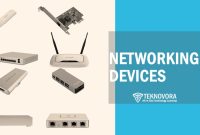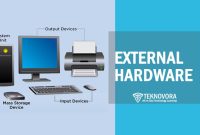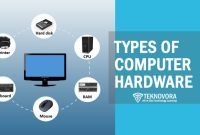When you power on a computer, you’re not just starting a machine—you’re activating a carefully engineered ecosystem of components working in perfect harmony beneath the surface. At the core of this system lies what’s known as Internal Hardware—the physical parts located inside the computer case that perform the most critical functions, from processing information to storing data and distributing power.
Unlike peripherals that you plug in from the outside, internal hardware forms the foundation of any computing system. These components determine how fast your applications load, how well your programs run, and how efficiently your machine handles everything from basic web browsing to demanding 3D rendering.
Whether you’re building a custom PC, upgrading an old laptop, or simply curious about what powers your device, understanding internal hardware is essential. It helps you make smarter decisions about performance, compatibility, and long-term value.
What Is Internal Hardware?
Internal hardware refers to the essential physical components located inside a computer’s case that are responsible for performing all core computing tasks. These devices are not visible during regular use, but they are the backbone of how any digital process is executed—from opening an application to rendering a high-resolution video.
Unlike external hardware such as monitors, keyboards, or printers, internal components are installed on the motherboard or connected directly to it. Together, they handle processing, memory, storage, graphics, power delivery, and system control functions.
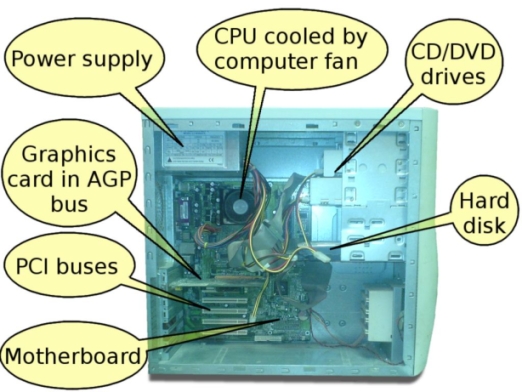
Internal hardware typically includes:
- Motherboard
- Central Processing Unit (CPU)
- Random Access Memory (RAM)
- Storage drives (SSD/HDD)
- Graphics Processing Unit (GPU)
- Power Supply Unit (PSU)
- Cooling systems and internal fans
Each component has a unique role, but none of them function in isolation. They communicate through buses, sockets, and connectors to ensure the computer operates efficiently. Without internal hardware, software would have no platform to run on.
Why Internal Hardware Matters
Every click, command, or task you execute on a computer is powered by internal hardware. These hidden parts are what determine how fast your device can boot up, how smoothly it can run multiple applications, how much data it can store, and even how cool and quiet it remains under pressure.
Here’s why understanding and optimizing internal hardware is so important:
Performance Foundation
The performance of your system is directly tied to the quality and compatibility of its internal components. A fast CPU, for example, enables quick processing, but if it’s paired with slow storage or insufficient RAM, the entire system will bottleneck.
System Stability and Reliability
High-quality internal components tend to be more reliable and less prone to failure. They’re built with better thermal management, firmware support, and compatibility standards—ensuring that your system runs smoothly even under heavy load.
Upgrade Potential
Knowing what internal hardware you have allows you to plan for future upgrades. Whether it’s adding more RAM, swapping in a larger SSD, or replacing the CPU, internal hardware dictates how adaptable your system is to changing software and workload demands.
Energy Efficiency and Thermal Management
Efficient internal components consume less power and generate less heat, resulting in quieter systems and lower electricity usage—especially important for laptops, servers, and green computing setups.
Security and Data Protection
Some internal components—such as storage devices—are directly tied to how securely your data is stored and accessed. Features like encryption, secure boot, and BIOS-level protections are all part of internal hardware design.
Types of Internal Hardware Components
Internal hardware components are the fundamental building blocks of a computer system. They sit inside the computer case, typically mounted on or connected to the motherboard, and work together to process data, store information, handle graphics, and manage power. Understanding these components—how they work, what they do, and how they interact—is essential whether you’re a tech professional, student, or everyday user.
In this section, we’ll explore each major type of internal hardware in detail, covering its function, importance, examples, and how it fits into the larger system.
Motherboard

The motherboard is the central nervous system of the computer. It is a printed circuit board (PCB) that connects all internal hardware components, allowing them to communicate with one another. Every major part—CPU, RAM, GPU, storage, and peripherals—plugs into or is soldered onto the motherboard.
Key Functions:
- Provides electrical connections for data flow between components
- Hosts the chipset, which manages communication between CPU, RAM, and other devices
- Contains the BIOS/UEFI firmware, which initializes hardware at startup
- Offers expansion slots (e.g., PCIe) for additional cards such as GPUs or sound cards
- Includes connectors for storage, USB headers, fan headers, and power
Types of Motherboards:
- ATX (Advanced Technology eXtended) – Standard for desktops
- Micro-ATX – Smaller and more affordable, fewer expansion slots
- Mini-ITX – Ultra-compact, common in small form factor PCs
Real-World Impact:
The motherboard determines what other components your system supports—CPU socket, RAM type, storage interface, and expansion capability. Choosing the right motherboard means planning for both current performance and future upgrades.
Central Processing Unit (CPU)
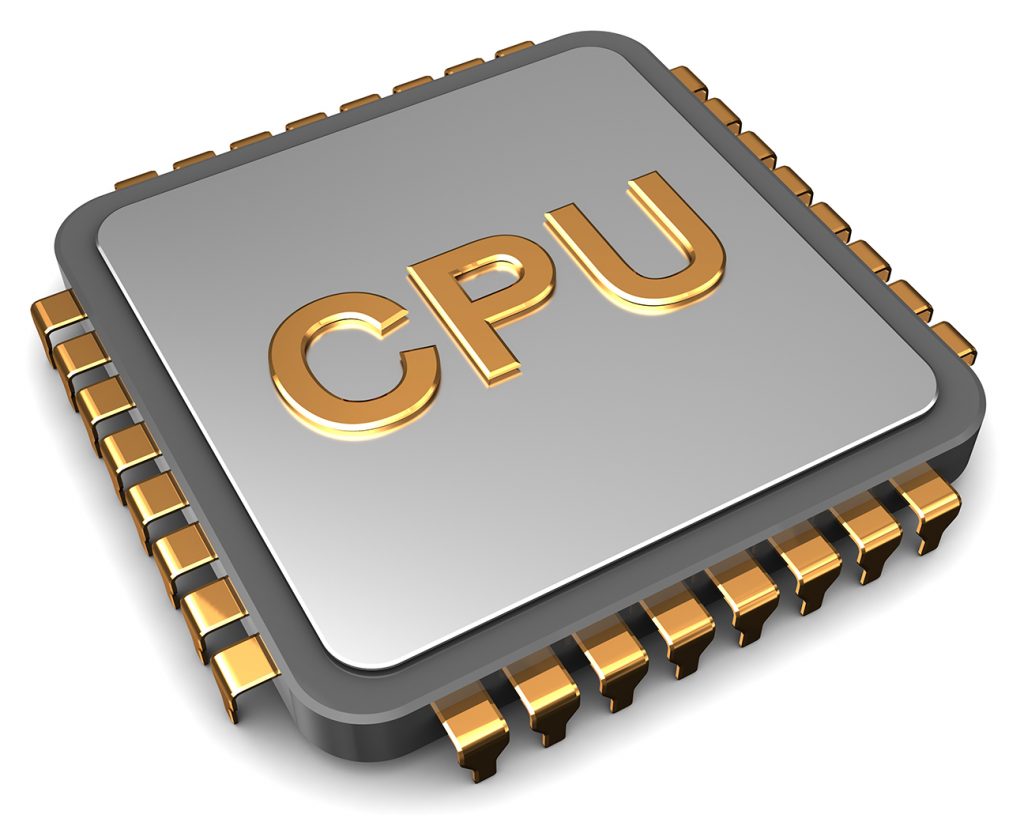
The CPU, often called the “brain of the computer,” performs most of the actual computation. It processes instructions from programs, handles system operations, and coordinates communication between all components.
Core Functions:
- Executes billions of instructions per second
- Manages logical operations, arithmetic, and decision-making
- Controls the flow of information within the system
Key Specifications:
- Clock Speed (GHz): Determines how fast the CPU can process instructions
- Cores and Threads: More cores/threads allow better multitasking and parallel processing
- Cache Memory: Stores frequently used data for faster access
- TDP (Thermal Design Power): Power consumption and heat output
Popular Brands:
- Intel: Core i3, i5, i7, i9 series
- AMD: Ryzen 3, 5, 7, 9 series
Why It Matters:
A high-performance CPU ensures smooth operation of software, faster response times, and support for demanding workloads like gaming, video editing, and 3D rendering. It also affects how long your system remains relevant as software evolves.
Random Access Memory (RAM)
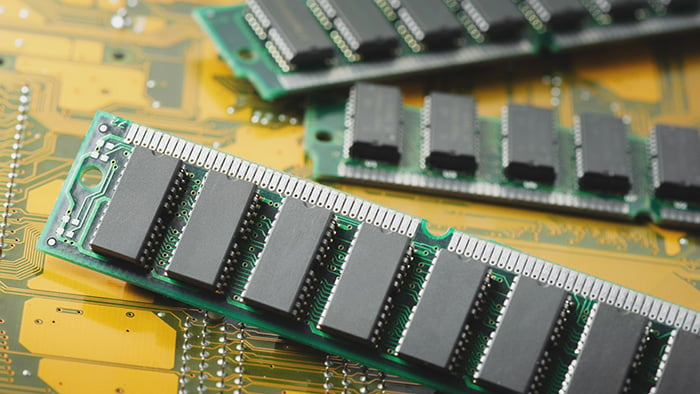
RAM is a type of volatile memory that stores data temporarily while the computer is on. It allows the CPU to access data and instructions quickly without having to retrieve them from slower storage devices.
Functions:
- Temporarily stores the data of active programs and processes
- Allows quick read/write access to boost performance
- Supports multitasking and high-speed operations
Specifications:
- Capacity (e.g., 8GB, 16GB, 32GB): More RAM allows more apps to run simultaneously
- Speed (e.g., 3200MHz): Faster RAM improves data access times
- Type: DDR4 and DDR5 are the most common modern formats
Channels:
- Single-channel: One RAM module operating independently
- Dual-channel or Quad-channel: Allows parallel access to RAM for improved bandwidth
Impact on Performance:
Insufficient RAM can cause lag, freezing, or app crashes. On the other hand, having enough RAM ensures smooth multitasking and better user experience—especially with modern operating systems and heavy apps.
Storage Devices (HDD & SSD)

Storage devices are where your computer keeps its data permanently—even when powered off. While older systems primarily used HDDs (Hard Disk Drives), modern computers often include SSDs (Solid State Drives) for faster access.
Hard Disk Drive (HDD):
- Mechanical device with spinning platters
- Higher capacity for lower cost (e.g., 1TB or 2TB)
- Slower read/write speeds (~100-200MB/s)
Solid State Drive (SSD):
- No moving parts, uses NAND flash memory
- Significantly faster speeds (~500MB/s to 7000MB/s)
- More durable and energy efficient
Interfaces:
- SATA: Common in both HDD and SSD, slower but still widely used
- NVMe (via PCIe): Offers extremely fast speeds, ideal for high-performance needs
Storage Considerations:
- SSDs greatly reduce boot times and app loading
- HDDs are still useful for bulk storage or backups
- Many systems use a combination of SSD (OS/app) and HDD (files/media)
Graphics Processing Unit (GPU)
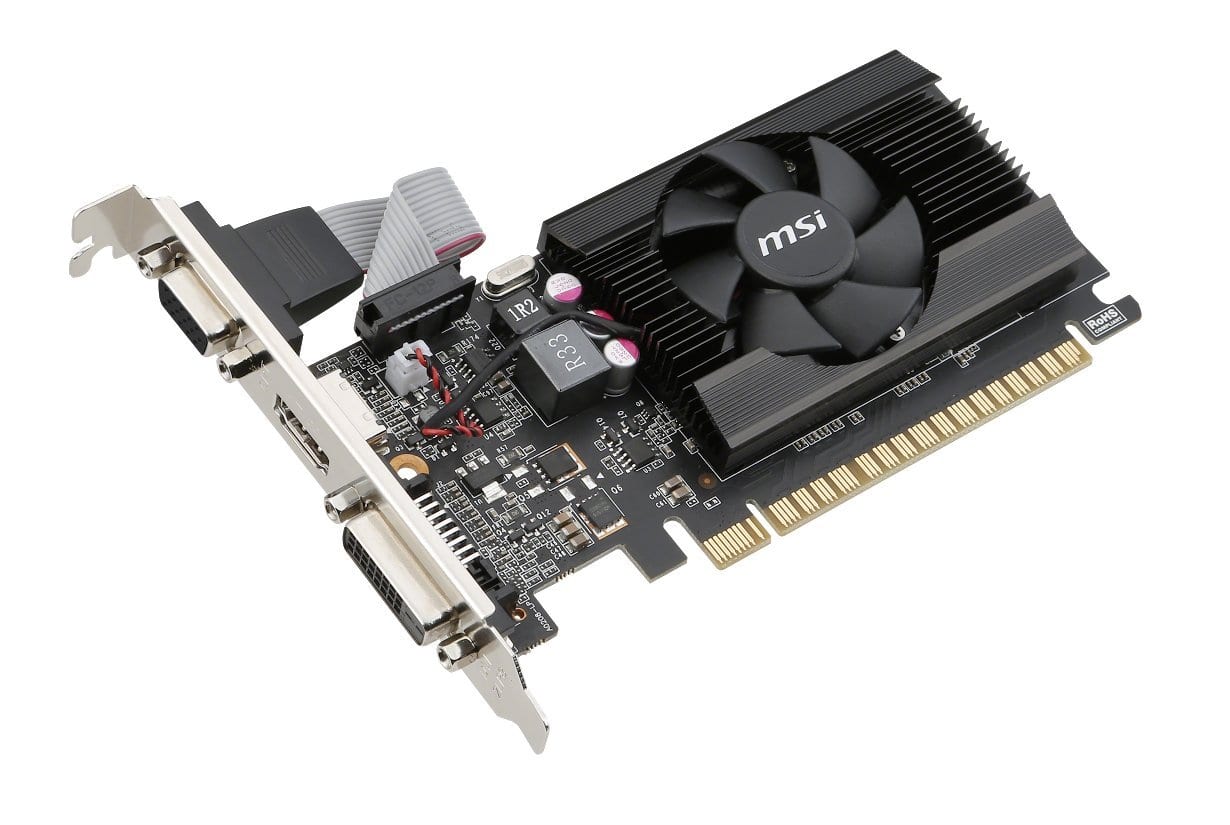
A GPU is responsible for rendering images, videos, and animations. While integrated GPUs (iGPU) are part of the CPU and share system memory, dedicated GPUs have their own processing cores and VRAM, delivering significantly better performance.
Functions:
- Renders 2D and 3D graphics
- Handles complex visual effects in games and video editing
- Supports machine learning and AI workloads
Key Metrics:
- VRAM (e.g., 4GB, 8GB, 16GB): Higher capacity = better for high-resolution content
- Core count (CUDA, Stream Processors): More cores enable faster rendering
- Clock speed and memory bandwidth
Use Cases:
- Integrated GPU: Suitable for office work, media playback, and light gaming
- Dedicated GPU: Required for professional rendering, gaming, CAD, and AI
Power Supply Unit (PSU)
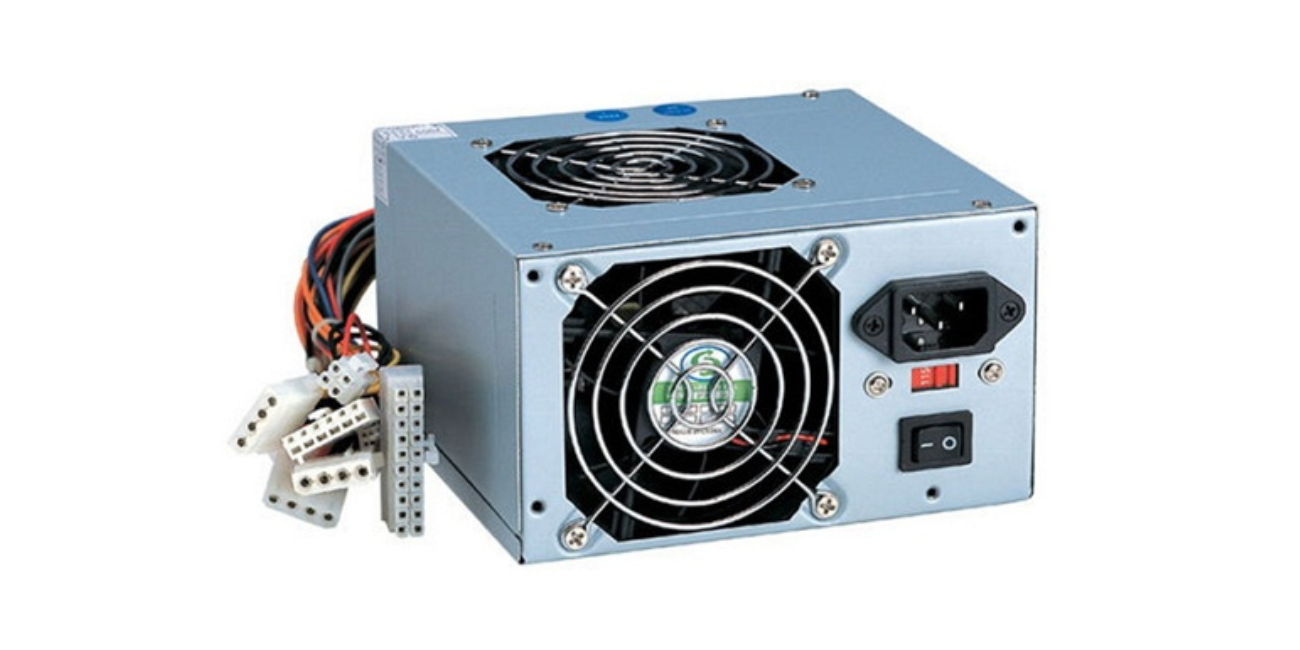
The PSU converts the alternating current (AC) from your wall outlet into low-voltage direct current (DC) that your components can use. It also distributes the appropriate voltage levels to each device.
Why It’s Critical:
- Protects components from power surges
- Ensures stable voltage delivery
- Supports system expansion with enough wattage headroom
Key Specs:
- Wattage (e.g., 550W, 750W, 1000W): Must match or exceed total power needs
- 80 Plus Certification: Indicates energy efficiency (Bronze, Silver, Gold, Platinum)
- Modularity:
- Non-modular: All cables permanently attached
- Semi-modular: Some detachable cables
- Fully modular: All cables are removable
Mistake to Avoid:
Using a PSU that’s too weak can cause crashes, reboots, or even hardware damage—especially with high-end GPUs.
Cooling Systems
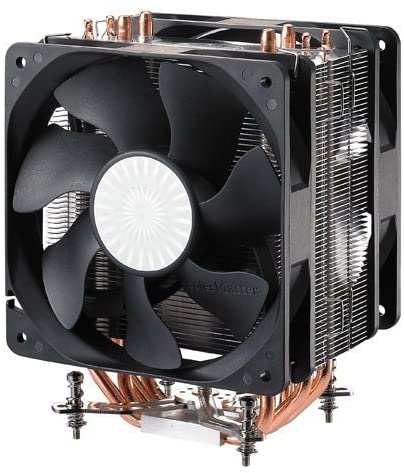
Internal components generate heat during operation, and effective cooling is essential to prevent overheating and thermal throttling. Systems typically include a combination of air cooling, fans, and sometimes liquid cooling solutions.
Types:
- Air Cooling: Involves heatsinks and fans; most common and affordable
- Liquid Cooling: Uses water or coolant to dissipate heat; more efficient but complex
Components:
- CPU Coolers: Can be stock or aftermarket (tower-style, AIO coolers)
- Case Fans: Positioned to optimize airflow (intake & exhaust)
- Thermal Paste: Applied between CPU and heatsink to improve conductivity
Impact:
Efficient cooling leads to:
- Longer hardware lifespan
- Stable performance under load
- Quieter operation
- Better thermal headroom for overclocking
Expansion Cards

Expansion cards are add-ons inserted into PCIe slots on the motherboard. They add new functionality not included in the base system.
Common Types:
- Graphics cards (GPU)
- Sound cards
- Capture cards
- Network cards (Ethernet/Wi-Fi)
- RAID controllers
While not always necessary in modern systems, expansion cards offer customization and performance boosts for specific tasks.
Internal Cables and Connectors
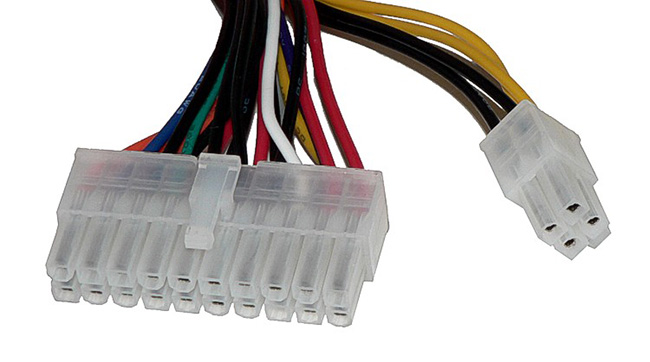
Not all internal hardware is a large component. Cables play a key role in connecting and powering devices.
Examples:
- SATA cables: Connect HDDs/SSDs to the motherboard
- Power connectors: 24-pin ATX, 8-pin CPU, PCIe 6/8-pin for GPU
- Front panel headers: Power button, USB ports, audio jacks
A clean cable setup improves airflow, safety, and aesthetics.
Summary Table: Internal Hardware Components
| Component | Main Function | Key Specs | Example Brands |
|---|---|---|---|
| Motherboard | Connects all components | Form factor, socket, chipset | ASUS, MSI, Gigabyte |
| CPU | Processes instructions | Clock speed, cores, cache | Intel, AMD |
| RAM | Stores temporary data | Size, speed, DDR type | Corsair, Kingston |
| SSD/HDD | Stores long-term data | Capacity, interface | Samsung, WD |
| GPU | Renders images/graphics | VRAM, cores, bandwidth | NVIDIA, AMD |
| PSU | Powers the system | Wattage, efficiency rating | EVGA, Corsair |
| Cooling | Regulates temperature | Air/liquid, fan RPM | Noctua, NZXT |
Internal Hardware vs External Hardware
While internal hardware operates inside the computer and performs core functions, external hardware refers to devices located outside the system case that enable users to interact with the machine or enhance its capabilities. Although both are essential to a functioning computer, their roles, structure, and interaction with the system differ significantly.
Understanding this distinction is key for building, upgrading, or troubleshooting a computer system.
Key Differences Between Internal and External Hardware
| Feature | Internal Hardware | External Hardware |
|---|---|---|
| Location | Inside the computer case | Outside the computer case |
| Visibility | Not visible during normal use | Visible and physically accessible |
| Function | Performs core operations (processing, memory) | Enables user interaction or expands functionality |
| Examples | CPU, RAM, SSD, motherboard, GPU | Keyboard, mouse, monitor, printer, USB drive |
| Installation | Requires disassembly or professional setup | Plug-and-play via ports (USB, HDMI, etc.) |
| Upgradability | Often more technical and compatibility-dependent | Easier to upgrade or replace individually |
Internal Hardware Is the Brain—External Hardware Is the Body
You can think of internal hardware as the brain, heart, and skeleton of a computer: it performs logic, stores memories, and holds everything together. Meanwhile, external hardware acts as the eyes, hands, and mouth—the parts that allow humans to interact with the machine.
For example:
- A CPU executes the code, but you need a monitor (external) to see the output.
- A storage drive (internal) holds your files, but you need a keyboard or mouse (external) to access them.
How Internal Hardware Works Together
While each internal hardware component has its own distinct purpose, a computer only functions effectively when all of these parts work together in harmony. The real power of a computer lies not just in the strength of individual components, but in how efficiently they communicate and support each other. Just like an orchestra, even the best soloist sounds incomplete without synchronization—and computers are no different.
Data Flow Inside a Computer
When you open a file, launch a program, or browse the internet, multiple internal components spring into action:
- The storage device (SSD or HDD) retrieves the required data or software.
- This data is temporarily placed into the RAM, giving the system fast access to the information.
- The CPU processes the instructions, managing logic, arithmetic, and execution of tasks.
- If the task involves visual output (like gaming or video rendering), the GPU takes over to render images.
- Meanwhile, the motherboard coordinates the flow of data and power among all these components.
- The PSU supplies electricity to all components, and cooling systems keep everything within safe operating temperatures.
This process happens in fractions of a second, millions of times over, and only works efficiently if each component is compatible and properly configured.
The Role of the Motherboard as Central Hub
At the heart of this collaboration is the motherboard, acting as the central platform where all components are physically connected and logically coordinated.
- The CPU socket connects the processor to the rest of the system.
- RAM slots allow memory modules to interface with the CPU.
- PCIe slots are used for GPUs and other expansion cards.
- SATA or M.2 slots host storage drives.
- Integrated chipsets regulate how fast data flows between components.
Without a compatible motherboard, none of the components could talk to each other, making it a critical part of hardware interoperability.
CPU, RAM, and Storage: The Performance Triangle
Among internal components, three parts form a performance-critical triangle:
| Component | Function | Dependency |
|---|---|---|
| CPU | Executes tasks | Needs fast RAM to avoid bottlenecks |
| RAM | Holds temporary data | Must be fast enough to supply the CPU |
| Storage | Stores long-term data | Speed affects how fast data loads into RAM |
If one of these is significantly weaker than the others, the entire system performance will suffer. For example:
- A fast CPU paired with low-speed RAM will cause data delays.
- A slow HDD with a high-speed CPU and RAM will cause slow application launches and file access.
This is why balanced configurations are vital in both personal computers and enterprise systems.
GPU and CPU Collaboration in Graphics Workloads
In modern systems, especially for gaming, 3D modeling, or AI, the GPU takes over rendering and parallel computation. However, the GPU still relies on the CPU to handle general processing and instruct what tasks the GPU should perform.
- The CPU prepares and organizes data for the GPU to process.
- The GPU handles rendering pixels, shading, textures, and visual effects.
- In high-end tasks, such as deep learning, the GPU may also process large sets of numerical data, freeing up the CPU for other jobs.
The Importance of Power and Cooling
All of these coordinated processes require stable power delivery and efficient cooling.
- The PSU ensures that every component receives clean, regulated power at the correct voltage and wattage.
- Cooling fans, heatsinks, or liquid cooling loops remove heat to keep temperatures safe.
- Overheating can cause performance throttling or hardware failure, making thermal design a key part of system reliability.
A poorly cooled system can lead to:
- Crashing under load
- Reduced component lifespan
- System instability and data corruption
Internal Hardware in Modern Laptops vs. Desktops
In desktops, internal components are modular and often replaceable, making upgrades easier.
In contrast, laptops usually use:
- Soldered CPUs or RAM, limiting upgradability
- Compact cooling systems, requiring more efficient parts
- Integrated GPUs in many models to save space and power
Despite these differences, the internal coordination remains the same: all parts must work as one.
When Things Go Wrong: Internal Hardware Conflicts
If components aren’t compatible or properly installed, several issues can arise:
- RAM not detected due to incorrect slot placement or mismatched speeds
- No boot because the motherboard BIOS doesn’t support the CPU
- Blue screens or crashing apps due to storage errors or overheating
- Random shutdowns caused by an underpowered PSU
Diagnosing these problems requires an understanding of how internal parts interact, which is why knowledge of system architecture is important for troubleshooting.
A modern computer is a delicate ecosystem of internal hardware working in sync. Each part relies on others to function at its best. Understanding this relationship helps users:
- Make smarter upgrade decisions
- Build systems that are optimized for specific tasks
- Diagnose and resolve technical problems effectively
When internal hardware works together seamlessly, you don’t notice the technology—you just enjoy the performance.
Common Internal Hardware Configurations by Use Case
Not all computers are built the same—and they shouldn’t be. The internal hardware required for checking emails and editing spreadsheets is vastly different from what’s needed to render high-definition video or run complex simulations. Understanding how different use cases shape internal hardware configurations helps you design or choose a system that’s not only cost-effective but optimized for performance and longevity.
Below are some of the most common internal hardware setups tailored to specific needs.
Office Workstations
For typical office tasks like word processing, emailing, working with spreadsheets, and light web browsing, the system doesn’t need cutting-edge specs. What matters most is reliability, energy efficiency, and cost-effectiveness.
Recommended Internal Hardware:
- CPU: Intel Core i3 / AMD Ryzen 3 (low to mid-tier)
- RAM: 8GB DDR4 (sufficient for multitasking with lightweight applications)
- Storage: 256GB SSD (fast boot and app load times)
- GPU: Integrated graphics (Intel UHD or AMD Vega)
- Motherboard: Basic chipset (e.g., B460, A320)
- PSU: 300–450W (efficient and low-noise)
- Cooling: Stock fan (adequate for low thermal loads)
This configuration balances affordability with smooth performance in business environments. Low power consumption and quiet operation make it ideal for shared or corporate settings.
Gaming PCs
Gaming demands high-performance components, especially for handling real-time graphics, fast input response, and system cooling. A gaming PC must be capable of rendering complex 3D environments without lag or stuttering.
Recommended Internal Hardware:
- CPU: Intel Core i5/i7 or AMD Ryzen 5/7 (high clock speed, multiple cores)
- RAM: 16GB DDR4/DDR5 (dual-channel preferred)
- Storage: 1TB NVMe SSD (quick load times, sufficient space for games)
- GPU: NVIDIA RTX 4060+ / AMD RX 7600+ (dedicated GPU essential)
- Motherboard: Mid- to high-end chipset (e.g., B650, Z790)
- PSU: 600–750W (modular, 80+ Gold)
- Cooling: Aftermarket air cooler or AIO liquid cooling (to maintain thermal stability.
This setup provides a smooth 1080p or 1440p gaming experience with headroom for streaming, modding, and competitive play. GPU and CPU balance is critical to avoid bottlenecks.
Creative Workstations (Video Editing, 3D Modeling, Design)
Professionals in content creation rely heavily on fast computation, large memory pools, and GPU acceleration. Whether you’re rendering animations or editing high-bitrate 4K footage, the system needs to keep up without lagging or crashing.
Recommended Internal Hardware:
- CPU: AMD Ryzen 9 / Intel Core i9 (multi-core performance for rendering)
- RAM: 32GB+ DDR5 (or ECC RAM for workstations)
- Storage: 1TB NVMe SSD (for OS and active projects) + 2TB HDD (archival)
- GPU: NVIDIA RTX 4070/4080 or AMD Pro series (CUDA or OpenCL support)
- Motherboard: Creator-class chipset (e.g., X670E, Z790)
- PSU: 750–850W (modular, 80+ Platinum preferred)
- Cooling: High-performance liquid cooling (silent + efficient)
Stability, speed, and expandability are key. These builds often include RAID storage setups and specialized GPUs for color accuracy and compute performance.
Budget Builds
Budget systems prioritize the best performance per dollar. These builds are often used by students, casual users, or DIY builders seeking flexibility at the lowest possible cost.
Recommended Internal Hardware:
- CPU: AMD Ryzen 5 5600G (with strong integrated graphics)
- RAM: 8GB DDR4 (upgradeable later)
- Storage: 512GB SATA SSD (fast and affordable)
- GPU: Optional (depends on APU capabilities)
- Motherboard: Entry-level chipset (e.g., A520, H610)
- PSU: 450–550W (non-modular but reliable)
- Cooling: Stock cooler (efficient and quiet enough for moderate use)
This configuration offers a solid starting point for light gaming, home use, or academic work. It can be upgraded over time with discrete GPUs or additional RAM.
Comparison Table: Use Case vs Hardware Profile
| Use Case | CPU | RAM | Storage | GPU | PSU |
|---|---|---|---|---|---|
| Office Workstation | Intel i3 | 8GB DDR4 | 256GB SSD | Integrated | 350W |
| Gaming PC | Intel i7 / R7 | 16GB DDR4 | 1TB NVMe SSD | RTX 4060+ | 650W |
| Creative Workstation | Intel i9 / R9 | 32GB DDR5 | 1TB NVMe + 2TB HDD | RTX 4070+ / Pro GPU | 850W |
| Budget Build | Ryzen 5 5600G | 8GB DDR4 | 512GB SATA SSD | Integrated or low-end | 450W |
Conclusion
Understanding internal hardware is essential for anyone who wants to truly grasp how computers work. From the CPU that processes instructions to the RAM that temporarily stores data, every internal component plays a critical role in ensuring a system runs smoothly, efficiently, and reliably. These components work together behind the scenes to perform the complex tasks we often take for granted—whether it’s browsing the web, designing graphics, or crunching massive data sets.
By learning the types of internal hardware, how they function, and how they interact, users can make smarter decisions when buying, upgrading, or maintaining their computers. Whether you’re building a gaming rig, optimizing a workstation for video editing, or simply extending the life of an office PC, internal hardware knowledge gives you the power to improve performance and solve problems before they arise.
FAQ About Internal Hardware
What are the 4 main types of hardware?
The four main types of hardware in a computer system are:
Input Devices – Used to send data to the computer (e.g., keyboard, mouse).
Output Devices – Used to present data from the computer (e.g., monitor, printer).
Processing Devices – Perform computation and logic (e.g., CPU, GPU).
Storage Devices – Save data for short or long-term use (e.g., SSD, HDD).
Each category plays a unique role, but all must interact efficiently for the system to work smoothly.
What are the two classifications of computer hardware based on location?
Computer hardware is commonly classified into two categories based on its physical placement:
Internal Hardware: Components located inside the computer case, such as the CPU, RAM, motherboard, GPU, and storage drives.
External Hardware: Devices connected externally to allow user interaction or additional functionality, such as keyboards, monitors, printers, and USB drives.
This classification helps differentiate between core operational parts and peripheral device accessories.
What are 5 internal hardware components?
Here are five essential internal hardware components found in most computers:
Central Processing Unit (CPU) – Executes instructions and runs programs.
Motherboard – Connects and coordinates all components.
Random Access Memory (RAM) – Temporarily holds data for quick access.
Solid State Drive (SSD) or Hard Disk Drive (HDD) – Stores data long-term.
Graphics Processing Unit (GPU) – Renders images and video (especially in gaming or creative tasks).
These components form the foundation of any modern computer system.
What are 5 external hardware devices?
Examples of common external hardware devices include:
Keyboard – Inputs text and commands.
Mouse – Navigates the graphical interface.
Monitor – Displays visual output from the system.
Printer – Outputs documents onto physical media.
External Hard Drive – Adds portable or backup storage capacity.
These devices enable user interaction and extend the computer’s functionality beyond the case.
What are the 4 network hardware components?
In networking devices setups, these four hardware components are essential:
Router – Directs traffic between networks and provides internet access.
Switch – Connects multiple devices on a local network.
Network Interface Card (NIC) – Allows a computer to connect to a network, wired or wireless.
Modem – Converts digital data for transmission over phone or cable lines (used in broadband access).
These devices may not always be inside a computer, but they are crucial for enabling network communication and internet connectivity.


